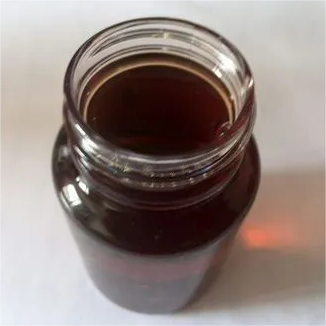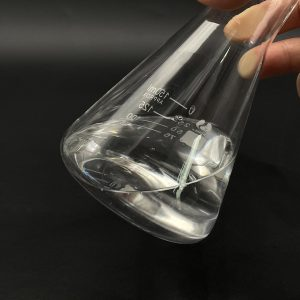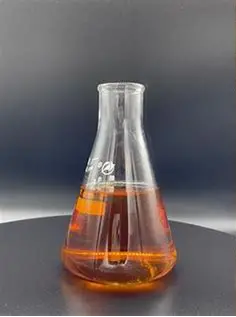1. Introduction
Sodium lauryl sulfate (SLS), also known as sodium dodecyl sulfate or natrium lauryl sulfate, is one of the most widely recognized anionic surfactants in consumer and industrial products. Found in everything from shampoos and toothpastes to herbicides and laboratory reagents, SLS is prized for its potent foaming and cleansing abilities. However, its reputation is often debated due to concerns about skin irritation and environmental impact. This article delves into the chemistry of SLS, compares it with structurally and functionally related surfactants, and evaluates its role among modern alternatives like alkyl polyglucosides, sarcosinates, and ethoxylated compounds.

2. Understanding Surfactants: The Meaning of Surfactant
A surfactant—short for ‘surface-active agent’—is a molecule that reduces surface tension between two substances, such as oil and water. The meaning of surfactant lies in its amphiphilic structure: a hydrophilic (water-loving) head and a hydrophobic (oil-loving) tail. This dual nature enables surfactants to emulsify, wet, foam, and disperse. Surfactants are classified into four main types: anionic, cationic, non-ionic, and amphoteric, based on the charge of their hydrophilic head group.
3. Sodium Lauryl Sulfate: Chemistry and Applications

Sodium lauryl sulfate (C12H25SO4Na), also referred to as sls sodium lauryl sulfate or na lauryl sulfate, is derived from lauryl alcohol (dodecyl alcohol) and sulfuric acid. As a strong anionic surfactant, it exhibits excellent detergency and foaming but can be harsh on skin and mucous membranes. It is commonly used in personal care products, industrial cleaners, and even as a denaturing agent in biochemistry (e.g., SDS-PAGE). Despite confusion in naming, sodium lauryl sulfate is distinct from sodium laureth sulfate (SLES), also called sodium lauryl ether sulfate or sodium lauryl ether sulphate.
4. Comparative Analysis of Common Surfactants

4.1. Sodium Lauryl Sulfate vs. Sodium Laureth Sulfate
While both SLS and sodium laureth sulfate (SLES, or sls sodium laureth sulfate) are anionic surfactants, SLES is ethoxylated—meaning ethylene oxide units are added to the lauryl chain. This modification makes SLES milder and less irritating than SLS, though slightly less effective at degreasing. SLES is prevalent in shampoos (e.g., sodium lauryl ether sulphate in shampoo) due to its rich lather and compatibility with other ingredients like cocamidopropyl betaine.
4.2. Mild Alternatives: Sarcosinates, Glutamates, and Glucosides
- Sodium lauroyl sarcosinate and sodium cocoyl glutamate are amino acid–based anionic surfactants known for low irritation and biodegradability.
- Alkyl polyglucosides like decyl glucoside and coco glucoside are non-ionic surfactants derived from renewable resources (e.g., coconut oil and glucose). They are gentle, eco-friendly, and often used in ‘sulfate-free’ formulations.
- Sodium coco sulfate (sometimes labeled as coco sodium sulfate) is a milder cousin of SLS, made from coconut oil, offering a balance between cleansing power and skin compatibility.
4.3. Amphoteric and Cationic Counterparts
Amphoteric surfactants like cocamidopropyl betaine (also called coco betaine, amidopropyl betaine, or coco amido propyl betaine) carry both positive and negative charges depending on pH. They enhance foam stability and reduce irritation when blended with anionic surfactants. In contrast, cationic surfactants such as cetyl trimethyl ammonium bromide (CTAB or cetyltrimethylammonium bromide) are used for antimicrobial and conditioning effects but are incompatible with anionic systems due to charge neutralization.
5. Industrial and Agricultural Uses Beyond Personal Care
Beyond cosmetics, surfactants play critical roles in agriculture. Sodium lauryl sulfate for sale is sometimes used as a surfactant for herbicides or a lawn wetting agent to improve the spread and penetration of weed killers. However, methylated seed oil and non-ionic surfactants like polysorbate 80, Span80, or ethoxylated alcohols are often preferred for their superior crop safety and rainfastness. Lignin sulfonate, a byproduct of paper manufacturing, serves as a cost-effective, biodegradable surfactant in some agrochemical formulations.
6. Safety, Misconceptions, and Market Trends
Despite viral claims, SLS is not carcinogenic, though it can cause irritation in sensitive individuals. Regulatory bodies like the FDA and EU SCCS deem it safe at typical usage levels. Meanwhile, demand for bio surfactants—such as rhamnolipids or sophorolipids—and plant-derived options like alkyl polyglucosides is rising. Companies like Rohit Surfactants Private Limited are expanding production of eco-friendly alternatives, including sodium cocoyl isethionate and sodium lauroyl methyl isethionate, which offer high performance with minimal environmental impact.
7. Conclusion
Sodium lauryl sulfate remains a benchmark anionic surfactant due to its efficacy and low cost, but its dominance is being challenged by milder, sustainable alternatives. Understanding the distinctions between anionic, cationic, non-ionic, and amphoteric surfactants—such as sodium dodecylbenzene sulfonate, ammonium lauryl sulfate, or fluoro surfactants—enables formulators to select the optimal agent for each application. Whether in a shampoo, a lab buffer, or a weed killer, the choice of surfactant profoundly influences performance, safety, and environmental footprint.
Our Website founded on October 17, 2012, is a high-tech enterprise committed to the research and development, production, processing, sales and technical services of ceramic relative materials such as What. Our products includes but not limited to Boron Carbide Ceramic Products, Boron Nitride Ceramic Products, Silicon Carbide Ceramic Products, Silicon Nitride Ceramic Products, Zirconium Dioxide Ceramic Products, etc. If you are interested, please feel free to contact us.


